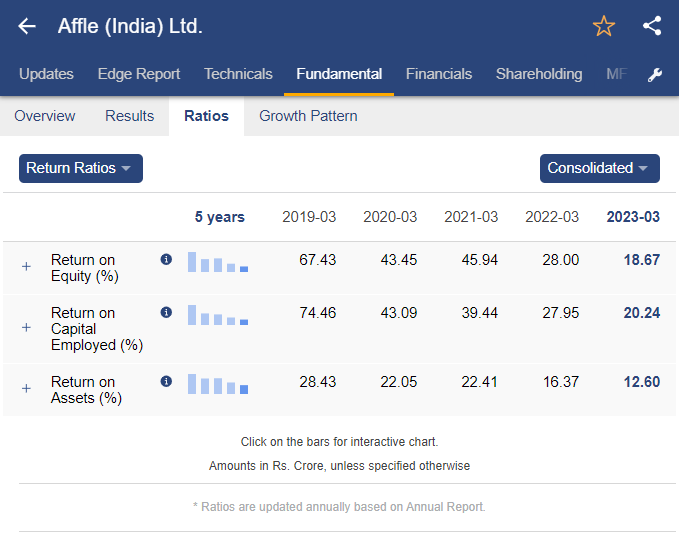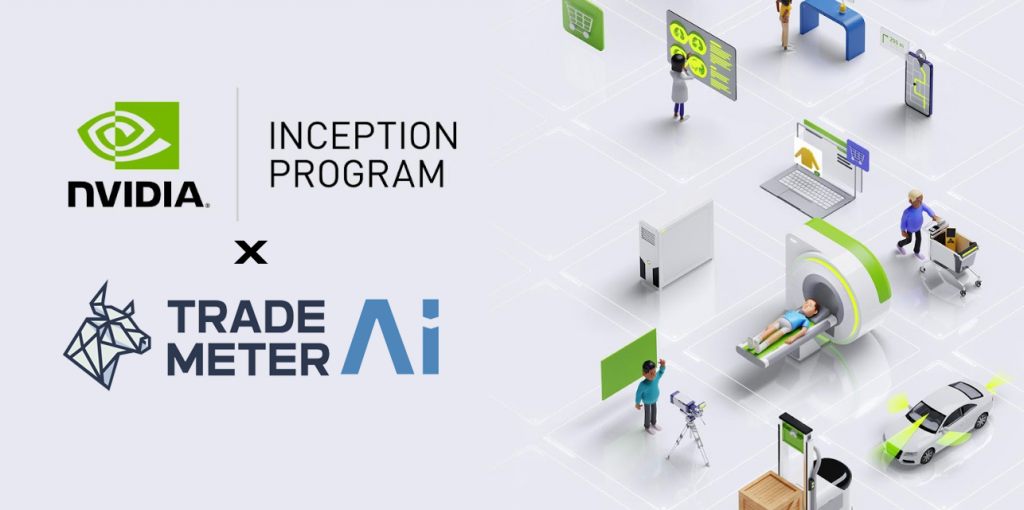Top 10 Tips To Automate Trading And Regularly Monitoring Trading In Stocks, From Penny Stocks To copyright
It is crucial to automate your trading and monitor it regularly particularly on volatile stock markets like penny stocks and copyright. Here are ten top suggestions to automate your trades as well as ensuring ongoing performance through regular monitoring:
1. Clear Trading Goals
Tips: Determine your trading goals. These include the risk tolerance level, return expectations, asset preferences (penny stock, copyright, both) and much more.
Why: Clear objectives should guide the choice and use of AI algorithms.
2. Trading AI platforms that are reliable
TIP: Choose an AI-powered trading platform that allows complete automation and seamless integration to your brokerage or copyright currency exchange. Examples include:
For Penny Stocks: MetaTrader, QuantConnect, Alpaca.
For copyright: 3Commas, Cryptohopper, TradeSanta.
Why: Automation success depends on a strong platform and execution capabilities.
3. Concentrate on Customizable Trading Algorithms
Tip: Use platforms that let you create or customize trading algorithms tailored to your specific strategy (e.g. trend-following, trend-following, mean reversion).
Why: The customizable algorithms allow you to tailor the strategy to suit your own trading style.
4. Automate Risk Management
Tip: Automatize your risk management using tools like trailing stops as well as stop-loss order and take-profit thresholds.
Why: These safeguards can help protect your investment portfolio, particularly when you are trading in volatile markets, such as penny stocks and copyright.
5. Backtest Strategies Before Automation
Tip Try your automated strategies on data from the past (backtesting) to evaluate performance prior to going live.
Why is it important to backtest the strategy has potential, reducing the risk of a poor results on live markets.
6. Be sure to monitor performance on a regular basis and adjust settings as needed
Tips: Keep track of performance regardless of whether the trading process is automated.
What to monitor: Profits and losses, slippage, as well as whether the algorithm is in line or not with current market conditions.
The reason: Continuous monitoring allows you to to make quick adjustments when the market conditions change, making sure the strategy remains effective.
7. The ability to adapt Algorithms: Implement them
Select AI trading tools that can adapt to changing conditions on the market, by altering their parameters in line with the latest data from trades in real time.
Why: Because markets change frequently and evolving, adaptive algorithms can be employed to improve strategies for cryptos or penny stocks to keep up with the latest trends and volatility.
8. Avoid Over-Optimization (Overfitting)
Don’t over-optimize an automated system based upon past data. This can result in overfitting where the system is performing better in backtests than under real-world conditions.
The reason: Overfitting decreases the strategy’s ability to adapt to the market’s future conditions.
9. Make use of AI to spot market anomalies
Tips: Use AI to detect unusual market patterns or abnormalities in the data (e.g., sudden spikes in trading volume news sentiment, or copyright whale activity).
The reason is that recognizing early these signals will allow you adjust your automated strategies in advance of major market movements.
10. Integrate AI into regular notifications and alerts
Tip Set up real-time alarms for market events that are significant, such as trade executions, and adjustments to your algorithm’s performance.
What’s the reason? You’ll be aware of any market movement and take quick action if required (especially for volatile markets, like copyright).
Bonus Utilize Cloud-Based Solutions to Scalability
Tip: Cloud-based trading platforms offer more scalability, speedier execution, and the capability to run multiple strategy simultaneously.
Cloud solutions are essential to your trading platform, since they allow your trading system to operate 24/7 without interruption, especially for copyright markets which never close.
You can profit from AI-powered trading strategies by automating your methods and monitoring them regularly. This reduces risk and improve overall performance. View the top redirected here on ai stock trading for blog tips including ai for trading, trading chart ai, ai trading bot, copyright ai bot, ai stock price prediction, copyright ai, copyright ai trading, ai day trading, best ai copyright, best ai stock trading bot free and more.

Top 10 Tips For Monitoring Market Sentiment Using Ai For Stock Picking As Well As Predictions And Investing
Monitoring the sentiment of the market is vital for AI-powered predictions, investments and the selection of stocks. Market sentiment could have significant influence on the performance of the stock market as well as its general developments. AI-powered tools are able to analyze vast amounts of information and extract the signals of sentiment from a variety of sources. Here are ten top tips to use AI to keep track of market’s sentiment and make the best stocks selections:
1. Natural Language Processing is a powerful tool to analyze sentiment
Tip: To gauge the mood of social media users Use AI-driven Natural Language Processing techniques. They can be used to study news articles, earnings report blogs, as well as other financial platforms.
The reason: NLP is a powerful tool that allows AI to study and quantify the emotions or opinions or market sentiments expressed in non-structured texts. This will help traders make better choices when it comes to trading.
2. Monitor Social Media for Sentiment Indicators
Tip Setup AI algorithms to scrape real-time data from social media, news platforms forums and other sources to determine the shifts in sentiment related to stocks or events.
What’s the reason? News and social networks are significant influences on the market, especially volatile assets. A real-time analysis of sentiment could provide traders with a clear and actionable plan for trading in the short-term.
3. Integrate Machine Learning to Predict Sentiment
Tip: Use machinelearning algorithms to forecast future market sentiment trends by studying historical data.
Why? By identifying patterns in sentiment data as well as previous stock movements, AI can forecast sentiment changes that could precede major price changes, providing investors with a an advantage in predicting price movements.
4. Combining Sentiment and Technical Fundamental Data
TIP : Use traditional indicators of technical analysis, such as moving averages (e.g. RSI), as well as essential metrics like P/E or earnings reports to build an investment plan that is more comprehensive.
The reason is that sentiment is an additional layer of data that is in addition to fundamental and technical analysis. Combining all these variables enhances AI’s ability to make informed and accurate predictions.
5. Monitor Changes in Sentiment During Earnings Reports, Key Events and Other Important Events
Tip: Use AI to monitor sentiment shifts prior to and after major events, like earnings announcements, product launches, or government announcements. They can be a major influence on the prices of stocks.
What’s the reason? These events can be causes of significant market sentiment shifts. AI detects shifts in sentiment rapidly and provide investors with insight into possible stock movements in response to these catalysts.
6. Concentrate on Sentiment clusters to Identify Trends
Tip Group sentiment data is used in clusters to identify the broader trends of the market, sectors or stocks that show positive and negative sentiment.
What is the reason? Sentiment clustering permits AI to spot new trends that might not be apparent from individual stocks or small datasets, which helps determine industries or sectors that are experiencing shifting investors’ interest.
7. Make use of sentiment scoring for stock evaluation
Tips: Create sentiment scores for stocks using analysis of news sources, forums, or social media. Use these score to filter and sort stocks based upon positive or adverse sentiment.
The reason: Sentiment scores are a quantifiable tool to determine the mood of the market towards the stock. This can aid in better decision-making. AI can refine the scores over time to increase the accuracy of predictions.
8. Track Investor Sentiment on a variety of Platforms
Check out the sentiments on different platforms (Twitter financial news sites; Reddit). Check the sentiments across various sources, and you’ll have a clearer picture.
What’s the reason? The sentiment on a particular platform may be incomplete or skewed. The monitoring of sentiment across different platforms can provide a complete and reliable information about investor attitudes.
9. Detect Sudden Sentiment Shifts Using AI Alerts
Tip Utilize AI-powered notifications to alert you when sentiments change drastically in relation to the stock or sector in question.
Why? Sudden sentiment shifts such as a rise in positive and negative mentions, could trigger swift price shifts. AI alerts are a great method to allow investors to react quickly before prices change.
10. Analyze the long-term trends in sentiment
Tips: Make use of AI to help you analyze long-term trending sentiments for stocks, industries, and the broader market.
The reason is that long-term sentiment trends can identify stocks that have a high potential for future growth or early warning signs of emerging risk. This type of perspective can be utilized to inform long-term investment strategies, and can be used to supplement short-term signals.
Bonus: Combine Sentiment with Economic Indicators
Tip – Use both macroeconomic and sentiment analysis indicators, such as GDP growth or inflation data to understand how economic conditions impact the market’s sentiment.
Why: Economic conditions can often influence the mood of investors. This in turn can affect the price of stocks. Through linking sentiment to economic indicators, AI can provide deeper understanding of market dynamics.
These tips will help investors to use AI effectively to analyze and monitor market sentiment. They will then be able to make better informed stock choices as well as investment forecasts and make better decisions. Sentiment analyses provide a unique real-time layer which is in addition to conventional analysis. They aid AI stock analysts navigate complicated market conditions better. Have a look at the top rated these details for copyright predictions for more tips including best ai trading bot, copyright ai bot, using ai to trade stocks, ai investing app, stock ai, ai stock trading app, ai copyright trading, ai copyright trading bot, best stock analysis website, ai stock prediction and more.

Leave a Reply